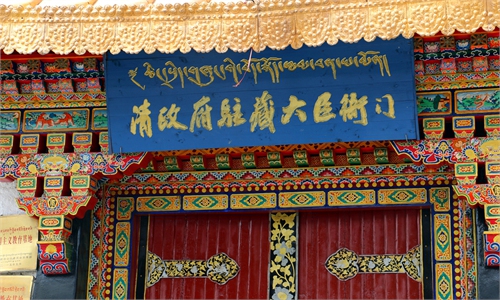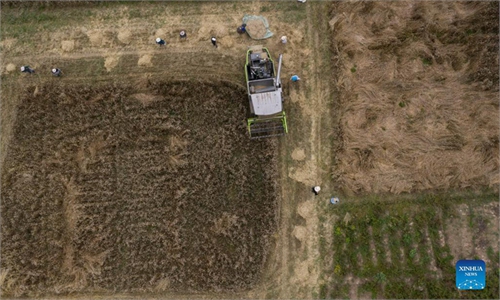ARTS / CULTURE & LEISURE
Japanese expert hails qualitative leap in China’s Tibetan studies
Tibetan studies in China have made rapid progress and achieved a qualitative leap in recent years, while the electronic age of Tibetan language supports the vigorous dissemination and development of Tibetan culture, said Kibaki Tanaka, a Japanese Tibetan culture expert.
Tanaka, a researcher at The Nakamura Hajime Eastern Institute, visited Tibet seven times between 1985 and 2007. He has published dozens of books on Tibetan culture and Thangka, a traditional Buddhist painting, and has promoted the spread of Tibetan culture in Japan by planning and holding thematic painting and photo exhibitions.
He told reporters in a written interview that China has established a Tibetology research center and its affiliated publishing house has published a large number of Tibetology-related books. In addition, many excellent books on Tibetan culture in the Tibetan language have been published in China.
The expert said The Chinese Tripitaka, published in the Tibetan language by the Tibetan research center, is an amazing work.
"Before the book was published, I always used scanned copies of woodcut prints for my research, but this movable type print edition of The Chinese Tripitaka has proofread the four woodcut prints. The publication of such a valuable document is a great achievement for future generations and researchers around the world," he said.
Tanaka was also deeply impressed by the development and application of the Tibetan language input method in China.
"The development and application of the Tibetan input method is huge social progress. After it was installed on computers and smartphones, it is easy to use and fast to input, which is really huge social progress," he said.
In 1997, the research center of the Tibet University developed the international standard of a basic set of Tibetan coded characters for information technology and information interchange. Since then, the Tibetan input method, Tibetan character recognition system, Tibetan office software operating system and other Tibetan software and application systems have been developed, bringing the Tibetan written language into the electronic era.
Thangka, Tibetan painting on cotton or silk, is also an important object of Tanaka's study.
"Most Chinese Thangka painters use Thangka paintings of the 18th and 19th centuries as models for their creation," Tanaka said.
"But if you want to restore Thangka murals from the 15th and 16th centuries, you need to use Thangka patterns from that era as a model, and currently there are not many Chinese painters studying Thangka paintings from the 15th and 16th centuries."
Tanaka, a researcher at The Nakamura Hajime Eastern Institute, visited Tibet seven times between 1985 and 2007. He has published dozens of books on Tibetan culture and Thangka, a traditional Buddhist painting, and has promoted the spread of Tibetan culture in Japan by planning and holding thematic painting and photo exhibitions.
He told reporters in a written interview that China has established a Tibetology research center and its affiliated publishing house has published a large number of Tibetology-related books. In addition, many excellent books on Tibetan culture in the Tibetan language have been published in China.
The expert said The Chinese Tripitaka, published in the Tibetan language by the Tibetan research center, is an amazing work.
"Before the book was published, I always used scanned copies of woodcut prints for my research, but this movable type print edition of The Chinese Tripitaka has proofread the four woodcut prints. The publication of such a valuable document is a great achievement for future generations and researchers around the world," he said.
Tanaka was also deeply impressed by the development and application of the Tibetan language input method in China.
"The development and application of the Tibetan input method is huge social progress. After it was installed on computers and smartphones, it is easy to use and fast to input, which is really huge social progress," he said.
In 1997, the research center of the Tibet University developed the international standard of a basic set of Tibetan coded characters for information technology and information interchange. Since then, the Tibetan input method, Tibetan character recognition system, Tibetan office software operating system and other Tibetan software and application systems have been developed, bringing the Tibetan written language into the electronic era.
Thangka, Tibetan painting on cotton or silk, is also an important object of Tanaka's study.
"Most Chinese Thangka painters use Thangka paintings of the 18th and 19th centuries as models for their creation," Tanaka said.
"But if you want to restore Thangka murals from the 15th and 16th centuries, you need to use Thangka patterns from that era as a model, and currently there are not many Chinese painters studying Thangka paintings from the 15th and 16th centuries."



